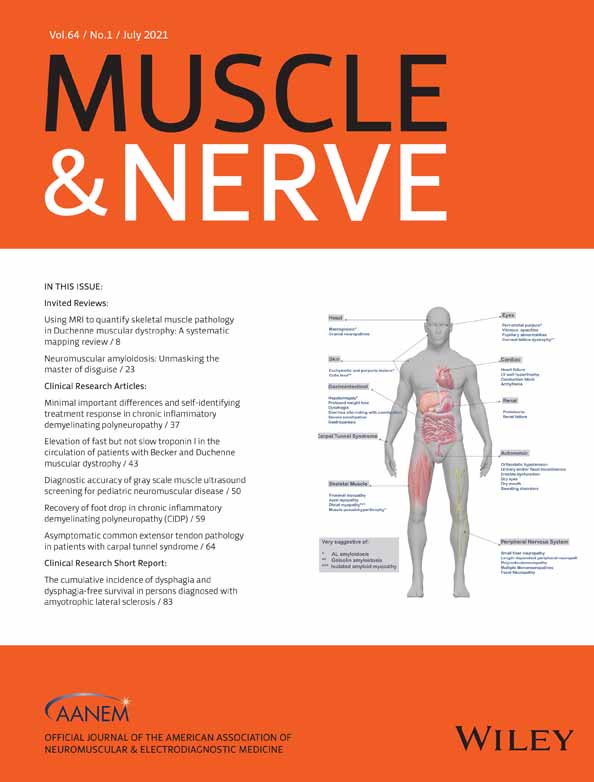Experiment for teaching virtual cathode in nerve conduction studies
Abstract
Introduction/Aims
The virtual cathode (VC) is a site near the anode where the nerve can be stimulated. Costimulation of neighboring nerves via the VC can affect recording and interpretation of responses. Hence, it is important to teach trainees the concept of the VC. The VC has been demonstrated previously with subtle changes in response latency, amplitude, and shape. Herein we describe an experiment that simply demonstrates a VC with its effects recognizable by gross changes in waveforms.
Methods
Compound muscle action potentials of the abductor pollicis brevis were recorded using various placements of the cathode and anode at different stimulus intensity levels. Studies were performed in nine healthy subjects.
Results
Three patterns were observed that demonstrated no stimulation, partial stimulation, and complete nerve stimulation by the VC. Partial stimulation yielded responses with long duration and low amplitude. Response patterns also depended on stimulus strength and proximity of the nerve from the skin surface.
Discussion
This experiment demonstrates that nerve stimulation can occur near the anode when high-intensity stimulus is used. It also illustrates collision of action potentials. This exercise can help trainees understand potential pitfalls in nerve conduction studies, especially at very proximal stimulation sites or when high stimulus intensity is used.
CONFLICT OF INTEREST
S.D.N. is an employee of Natus Medical, Inc. The authors declare no potential conflicts of interest.
Open Research
DATA AVAILABILITY STATEMENT
Research data are not shared.




